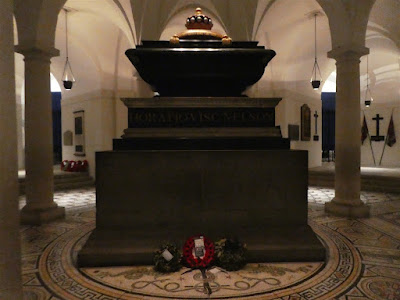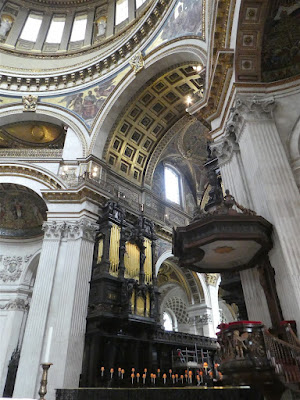Well, a few of the ones I care or know about. Much of modern British history is represented in St. Paul's monuments...
 |
| One of the iconic photos of WWII, London burning the night of December 29th, 1940, after a massive incendiary bombing by the Germans, part of their "Baedeker" campaign to destroy British historical and cultural monuments; this photo, "St. Paul's Survives," alone did much to steel British resolve, no matter what was ahead |
 |
Thus perhaps the cathedral's most important monument is outside, across the street, the monument to the Fire Watchers and Fire Fighters of those dark days |
 |
| Sir Joshua Reynolds |
 |
| Nelson, whose tomb is in the crypt |
 |
| America's favorite British general, Cornwallis; it wasn't his fault: read Barbara Tuchman's The First Salute |
 |
| My favorite British artist, Turner |
 |
| John Donne, metaphysical poet and Dean of the Cathedral |
 |
| Wellington, general, victor, prime minister, gets pride of place and largest monument, upstairs |
 |
| In the crypt, Wren's tomb |
 |
| "If you want to see my monument, look around you..." |
 |
| A stone bearing Wren's mark; he lived to the ripe age of 90 to see his son lay the Cathedral's final stone |
 |
| In the crypt are seeming hundreds of memorials and monuments, mostly military and naval; hey, you can't have an Empire without military and naval strength! |
 |
| Also in the crypt, not terribly helpful models of today's Cathedral and |
 |
| Its predecessor |
 |
| Nelson's tomb |
 |
| Great movie! |
 |
| Wellington |
 |
| And finally this, near the exit, past the gift shop: a plaque naming all the most important memorials and monument lost in the Cathedral in the Great Fire |

































